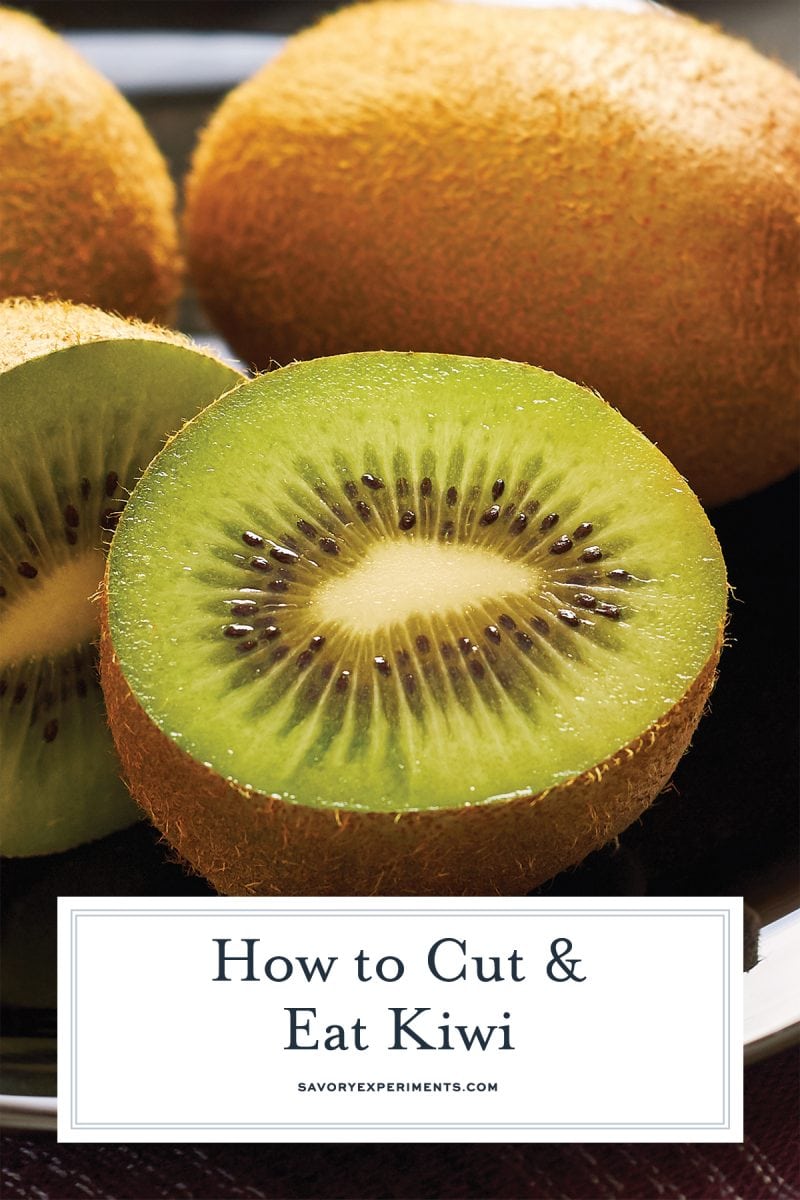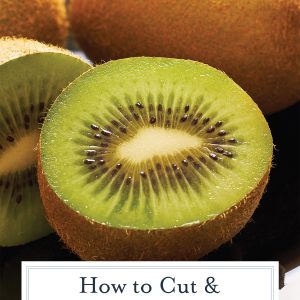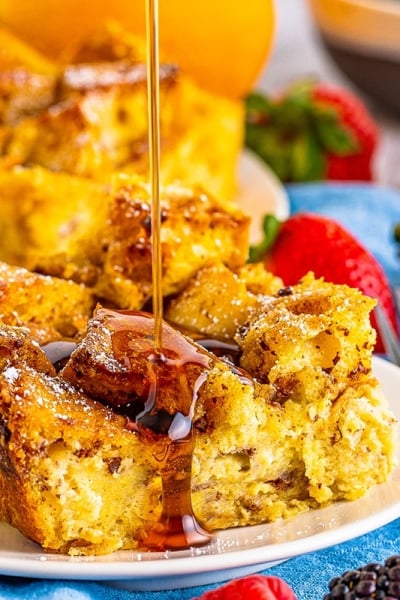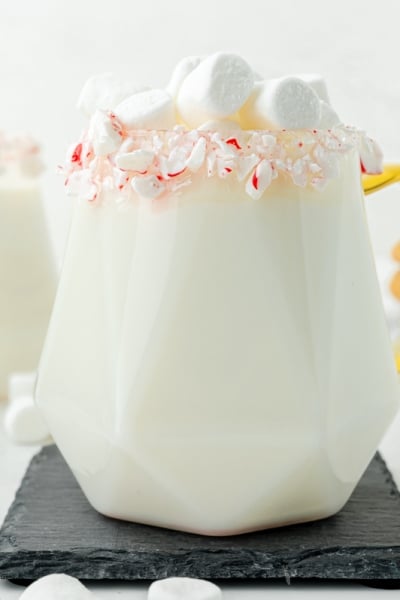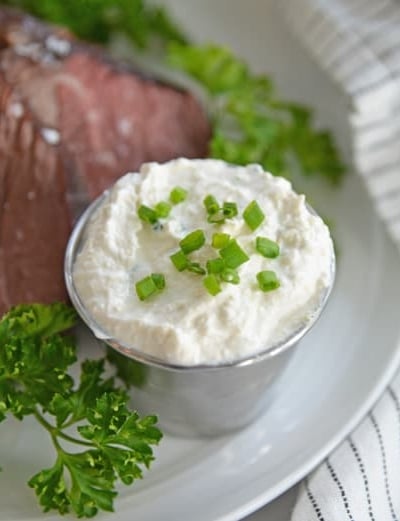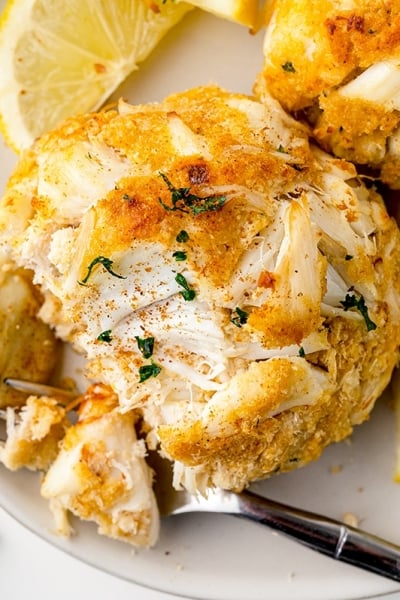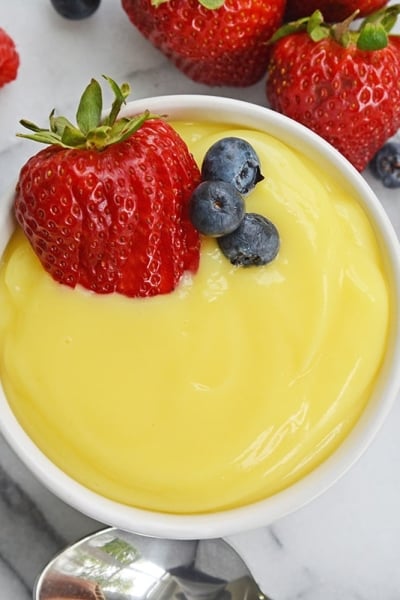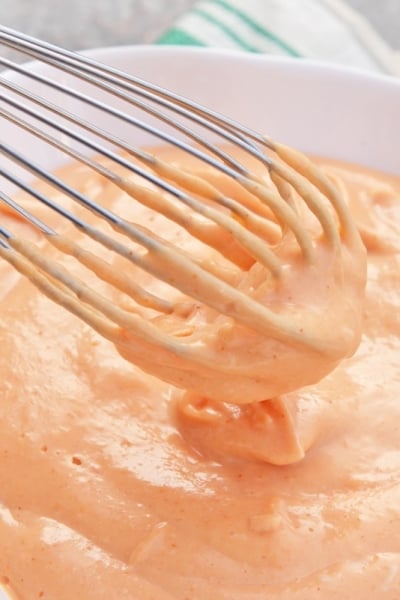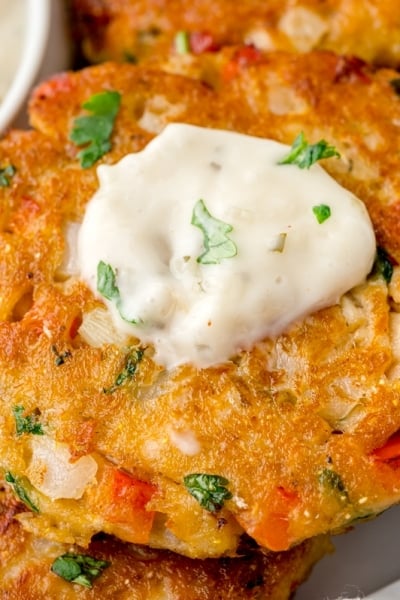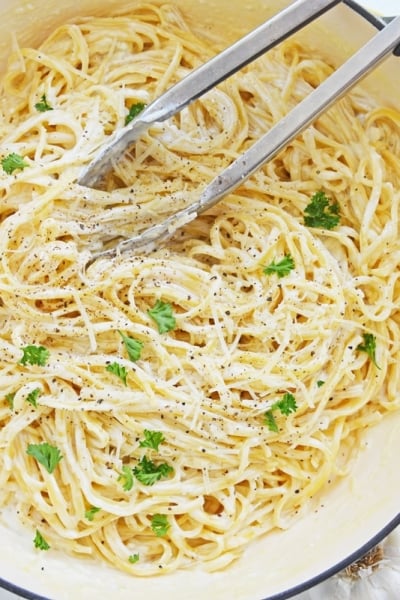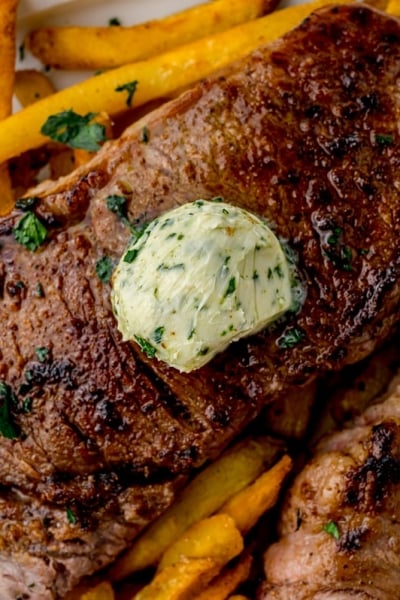Let’s talk all things kiwi! Whether you are looking for something to make you feel like you are on vacation, something to spice up your yogurt bowl, or simply looking to broaden your fruit-filled horizons, kiwi is a great place to start.
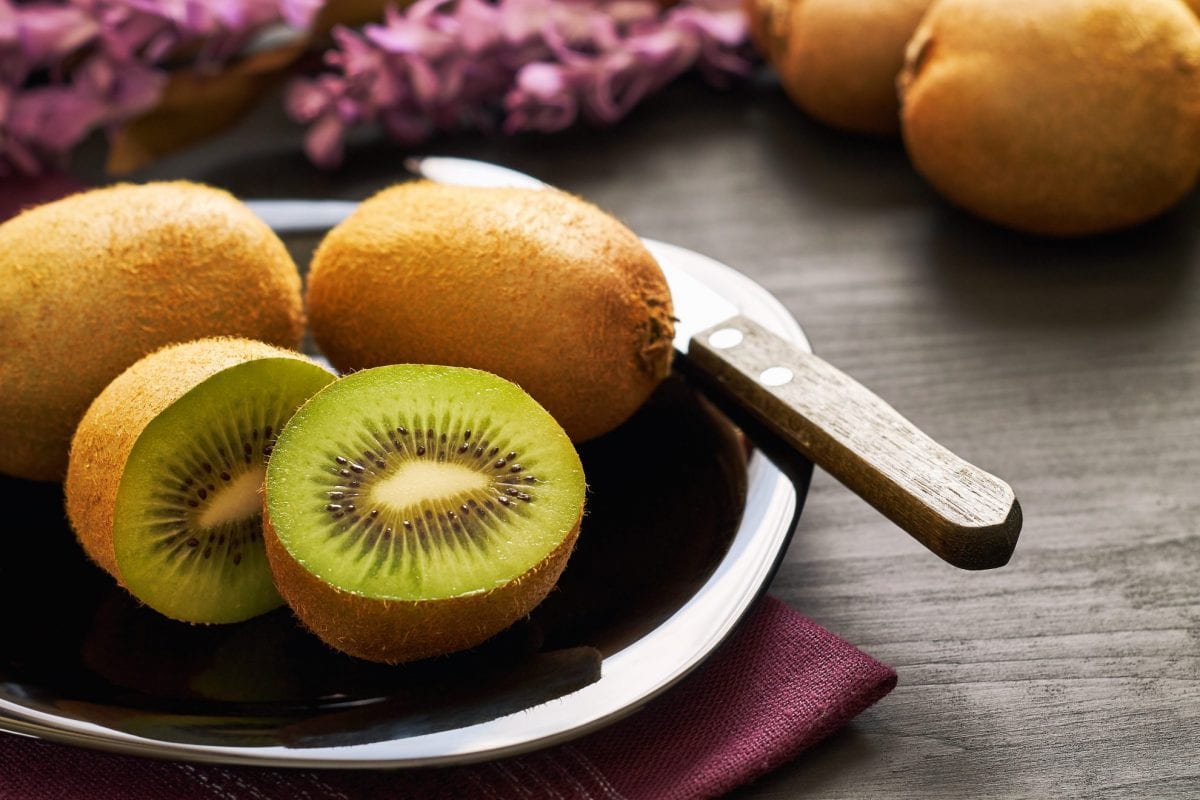
Plus, it is just downright fun to say… KIWI!
What Is Kiwi?
It might come as a surprise to many that the kiwi is actually a type of large berry (about the size of an egg) that grows on multiple species of woody vine. Even more surprising is that there are more than fifty species, but only a few mainstream and commercial varieties.
The main two you will see in the grocery store are the smooth, brown-skinned variety which are golden in color on the inside and sometimes called “gold kiwi” and the fuzzy-brown skinned variety which gives way to a bright green inside. These are unsurprisingly referred to as green kiwi.
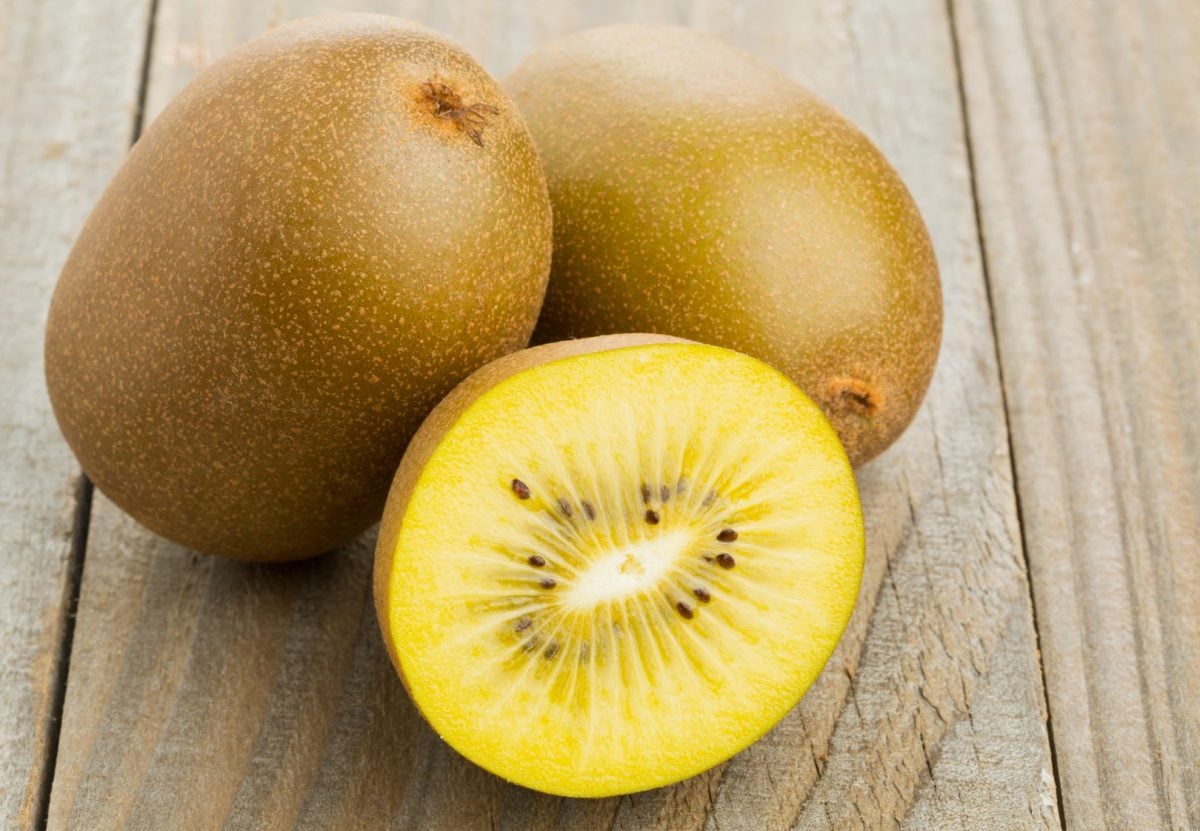
And because we are more likely to see the fuzzy type in day to day life, we will focus on that one here. Kiwifruit (as it is known in Australia and New Zealand) is said to have origins in Asia. These plants grow best in warm climates. The fruit itself does not ripen on the vine meaning they cultivate it when it is still a bit green and not at its optimal sweetness.
Kiwi Taste
For the uninitiated, I am sure you are asking, “So, what does a kiwi taste like?”
In terms of flavor, green kiwi is incredibly popular because of its unique flavor that has been described by some as a delightfully delicious, sweet, and tart mix of strawberry, banana, and pineapple.
What’s not to love?! It is juicy and tickles your tongue a little. Black speck seeds add texture.
How to Shop for Kiwi
Knowing how to shop for produce is one of the best things you can learn.
For kiwis, you are looking for a fruit that yields to gentle pressure much as a ripe avocado does. You should also give it a quick sniff. Does it smell pleasant and fragrant? Great, it is ready to go.
If there aren’t any ripe ones at the store or if you don’t need them for a few days, purchase the ones that haven’t gotten to that sweet spot and let them ripen at home. I hate to keep comparing them to avocados, but they share so many similarities in this way!
How to Ripen Kiwi
Kiwi ripens off the vine and there are a few things you can do to speed up the process so you can get to eating.
- Put them somewhere warm. Yes, it seems a bit obvious, but hey, it works
- Much like an avocado or a banana, throwing them in a paper bag helps to speed the process along quickly. Fun fact: ethylene is the chemical that helps fruits ripen. By putting certain fruits in a paper bag you are trapping that chemical in there with the fruit and surrounding it which speeds up the process. (Please note that plastic bags don’t cut it because they do not give the fruit enough ventilation.)
- No paper bag? No problem. Try throwing burying them in a bowl of uncooked rice. Same principle as the paper bag as the grains trap that ethylene in much the same way. Is it strange? 100%.
Store unused kiwis in a cool, dark place until ready to eat. The shelflife really depends on the age of the fruit when you buy it, but generally speaking they will last up to 5 days after being brought home.
How to Cut a Kiwi
There is no steadfast way to cut a kiwi because the entire fruit is edible from the brown furry exterior to green flesh, the black seeds, and the white center.
Most people choose to cut it into discs horizontally and then into half moons. It can also be cut into wedges, like an apple. This is if you are wanting to eat the skin, or at least willing to nibble around it.
How to Peel a Kiwi
But if the skin isn’t for you, feel free to take it off. There are 3 methods, all equally easy and effective.
- Cut off both ends, then insert a spoon right under the skin, slide it around the edge of the fruit to loosen skin and then then the flesh should slide out in one tubular piece.
- Use a paring knife to peel away the skin.
- Use a Y peeler or carrot peeler to peel away the skin.
Health Benefits of Kiwi
Not only are kiwis packed with Vitamin C and lots of dietary fiber, but they can also support digestive health, heart health, and boost the immune system. And on top of that, they also have lots of antioxidants.
This makes them perfect for munching, but also for smoothies, fruit salads and yogurt bowls.
What Can I Substitute for Kiwi?
Given the unique nature of this lovely little berry, it can be hard to find a proper substitute. Your best bet is going to be fresh strawberries OR fresh pineapple (or if you are feeling sassy a bit of both) given a squeeze of lime to give you that sweet-tart taste that kiwis are known for.
More kiwi info you might be interested in…
Kiwifruit is native to China, but is grown commercially all over the world including the United States, France, Greece, Italy, Chile, Thailand and New Zealand.
Most likely because they aren’t a very popular crop, but still there is more demand than supply. They also don’t have a long shelf life and needed to be harvested and stocked fairly quick making shipping and taxes more expensive.
Kiwi is actually a very large berry. They grow on trees.
